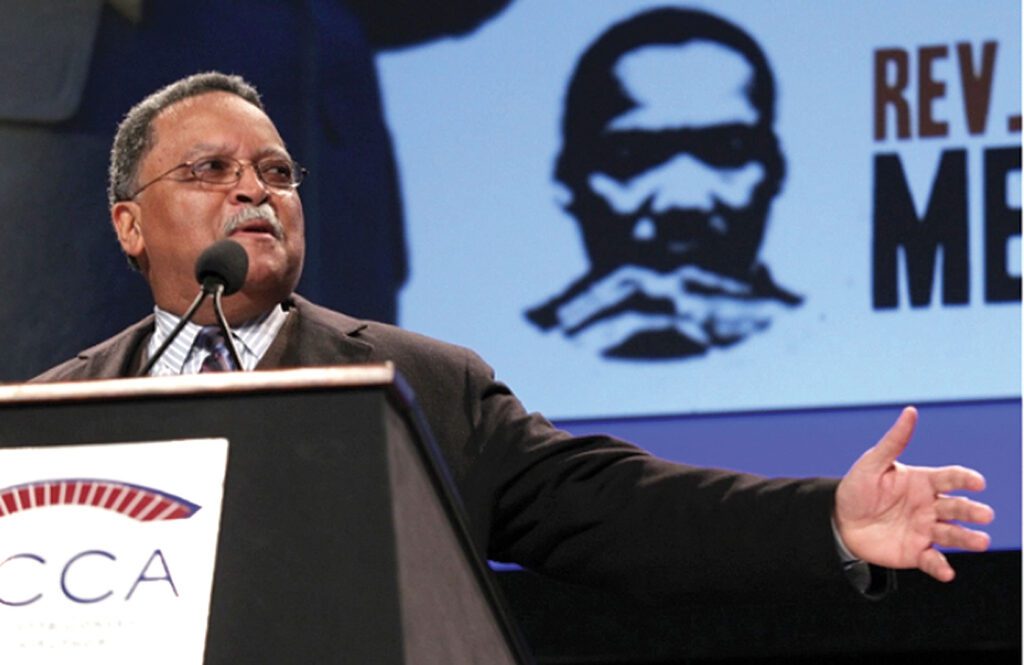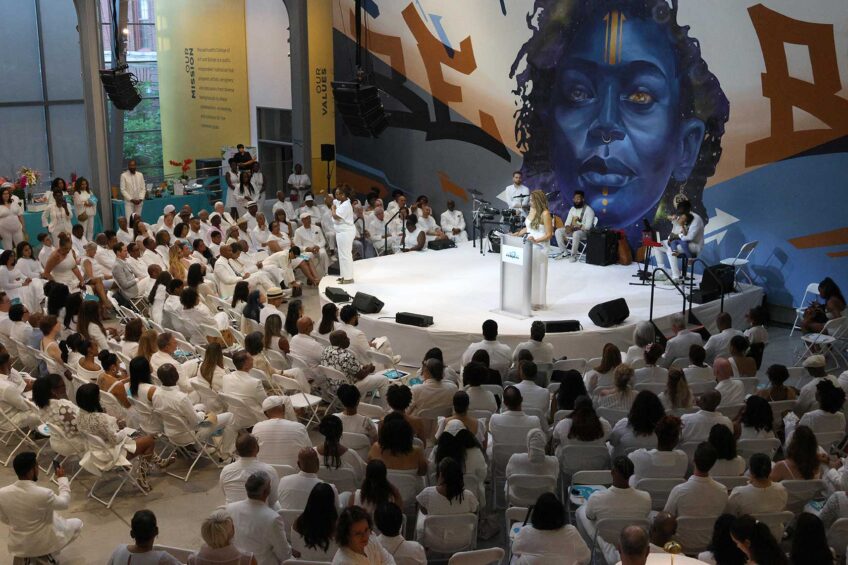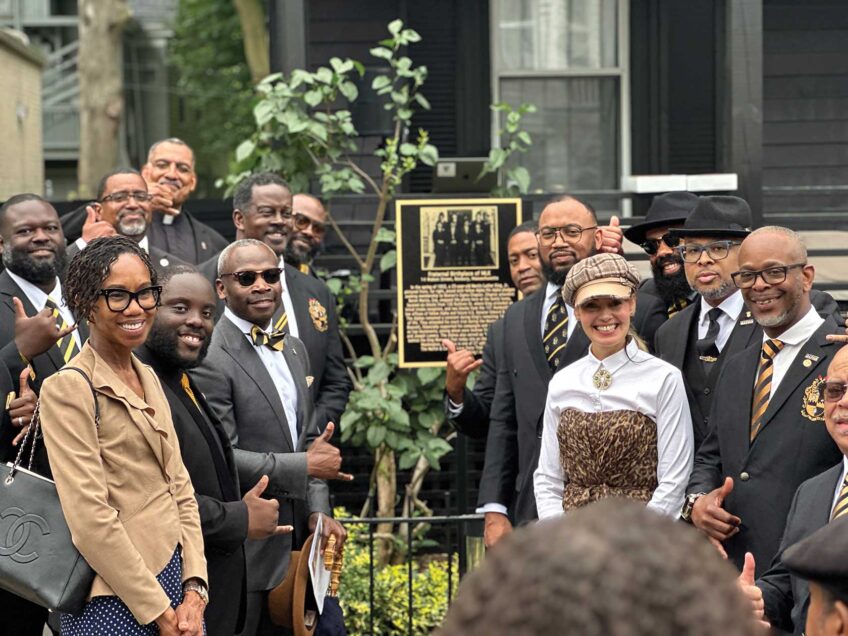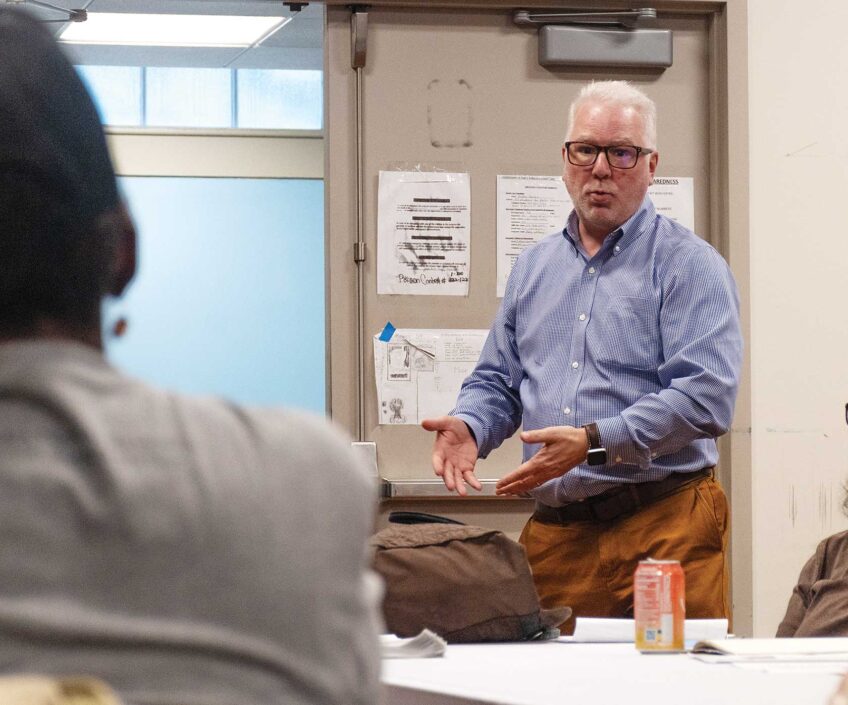Roxbury filmmaker’s project brings message of hope, inspiration from Earth’s orbit

For the month of February, the third-brightest object in the night sky will send a message of hope back to the world below.
A payload carrying a project by Roxbury native Topper Carew, filmmaker and co-producer of the show “Martin,” was launched Tuesday to the International Space Station, where an approximately nine-minute video of children’s choirs from different parts of the world singing “This Little Light of Mine” will broadcast to Earth for the duration of Black History Month.
“There is a tremendous amount of darkness at the moment, when we think about the wars, when you think about the division in this country,” said Carew, who developed the film and funded the project. “In my spirit, I was thinking it would be good if we created an experience that was trying to bring some positive energy to the planet.”
The song at the center of the project holds personal connection for Carew. When he was a voter registration worker for the Student Nonviolent Coordinating Committee, civil-rights leader Fannie Lou Hamer would lead the group in the song before campaigns and rallies.
Even before that, the song’s message of hope was one shared by his grandmother.
“When I was a little boy, my grandmother used to tell me we all have a little light inside of us and the light, it’s right next to our heart and, and oftentimes can be a light of good energy and love,” Carew said.
The project will be installed in the International Space Station National Laboratory, in what is functionally a broadcast studio the size of a shoebox. That studio was developed by DreamUp, an education-focused division of the company NanoRacks, which sends payloads into orbit.
For the next month, a website for the project will stream how the video looks as it’s transferred back to Earth along with other resources such as a tracker marking the path of the space station. Beyond its message of hope, the project also is meant to serve as an awareness campaign for space research.
“To support the next generation of science exploration and space exploration, we need students from all backgrounds to be inspired and engaged and studying STEM and interested in space,” said Lauren Milord, director of programs for DreamUp, which was responsible for the logistics of launching the project to the space station.
That effort to inspire greater involvement in space research includes trying to pull in scientists and students from diverse backgrounds underrepresented in space sciences.
Data from a 2021 National Science Foundation study found that about 3% of graduate students in astronomy and astrophysics who are U.S. citizens and permanent residents and just under 3% of those students in aerospace, aeronautical and astronautical engineering were Black. According to data from NASA, in 2021 African American staff comprised 11% of its civil service workforce.
“It’s a zone and a profession and an experience that we need to be involved in so we can be contributors to American productivity and prosperity,” Carew said during a phone interview.
Milord, who previously worked as a community engagement specialist at Boston Public Schools, said she would see students, even at science-focused schools, who didn’t necessarily understand the real-world and career implications of what they were studying.
“The more that we inspire everyone with this magic of what’s happening outside of the Earth’s atmosphere, the more we create that potential to link for students, like, ‘Huh, if I’m learning this unit in class, maybe one day I could actually participate in this,’” Milord said.
The project is also looking to hone scientific equipment in space. Outside of the Earth’s atmosphere there is less protection from ionizing radiation — tiny particles flying through space — that can affect technology and computer files on the space station, knocking pixels out of cameras or changing bits of information in code.
The particles can have real impacts. For example, radiation flipped a line of code for a NanoRacks camera on the space station, effectively turning it off until it could be reprogrammed, said Mike Lewis, chief innovation officer at NanoRacks.
While Carew’s project attempts to inspire, it also uses an experimental method of radiation shielding, thus adding scientific benefits to his efforts.
The project fits into a broader goal at NanoRacks — to make sending private payloads into low Earth orbit, where the space station sits, less cost-prohibitive, reducing the barrier to entry. Lewis said that protection from radiation is often one of the bigger cost factors.
The research aims to identify best practices for protecting from radiation, particularly in a way that has higher success with fewer financial barriers. NanoRacks will share any new information or discoveries with NASA and others at the National Laboratory under the agreements that allow the project onto the space station.






